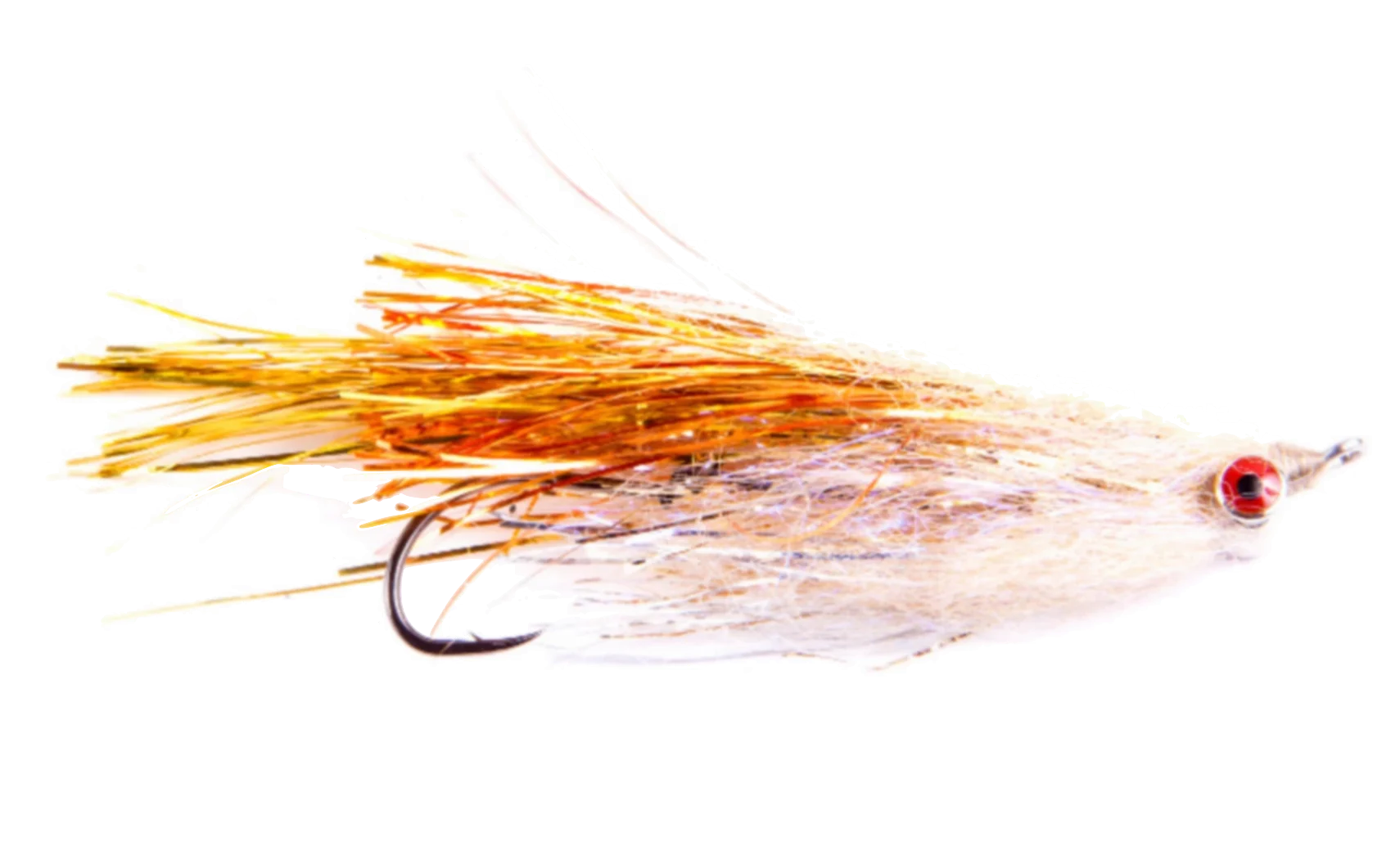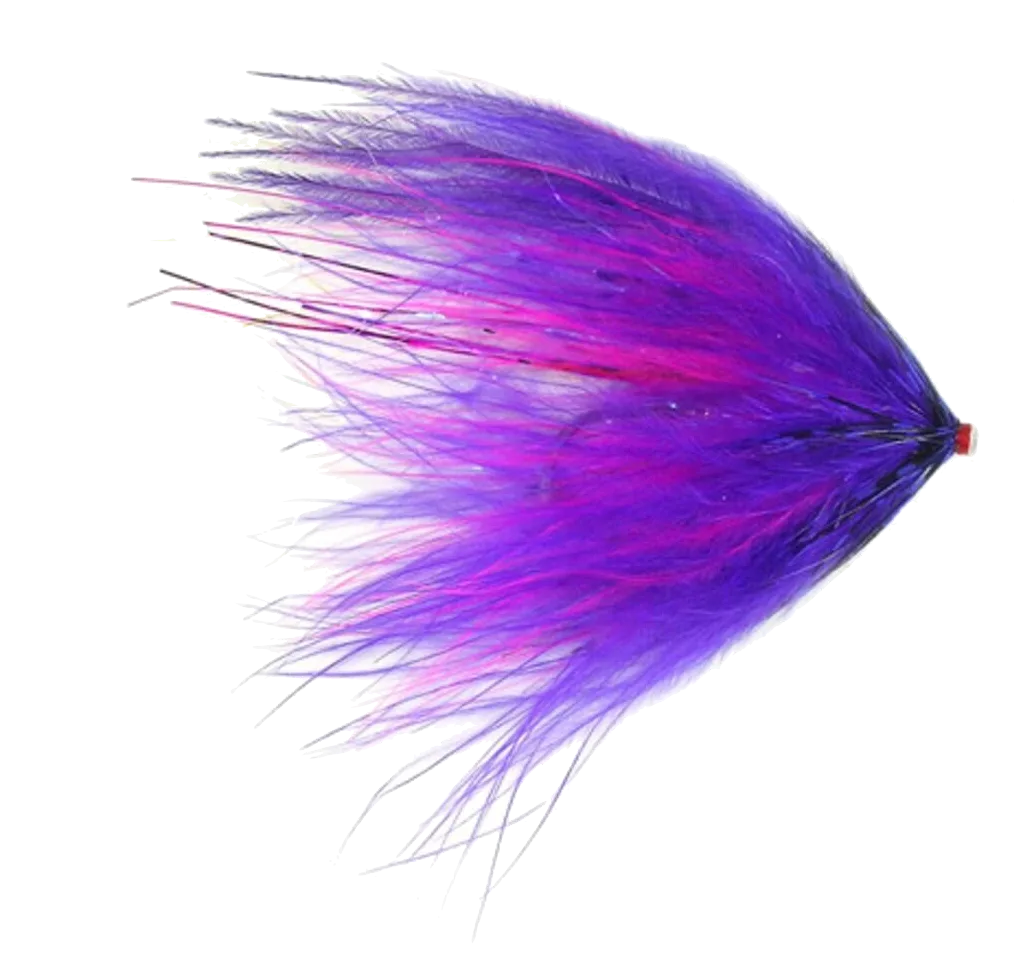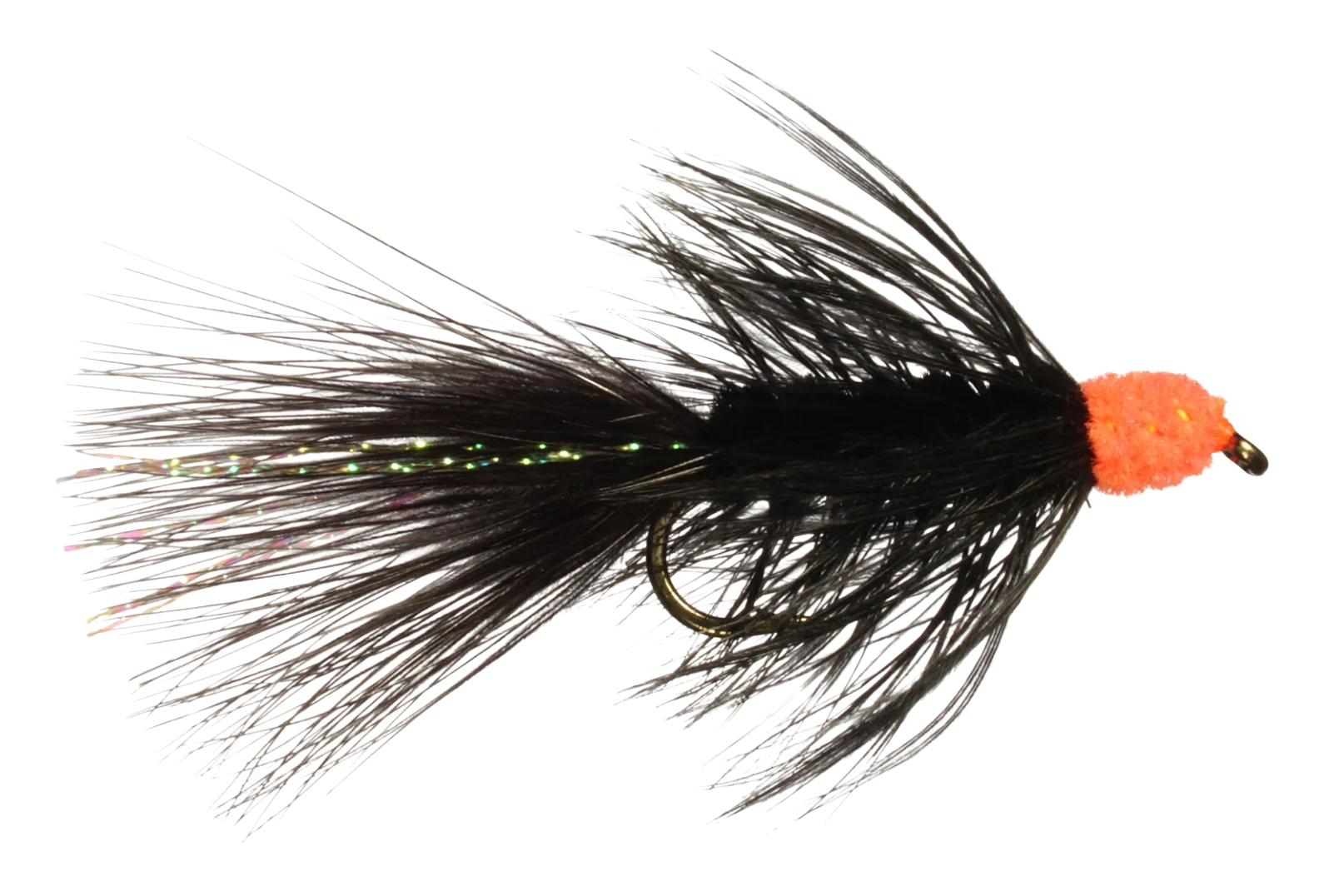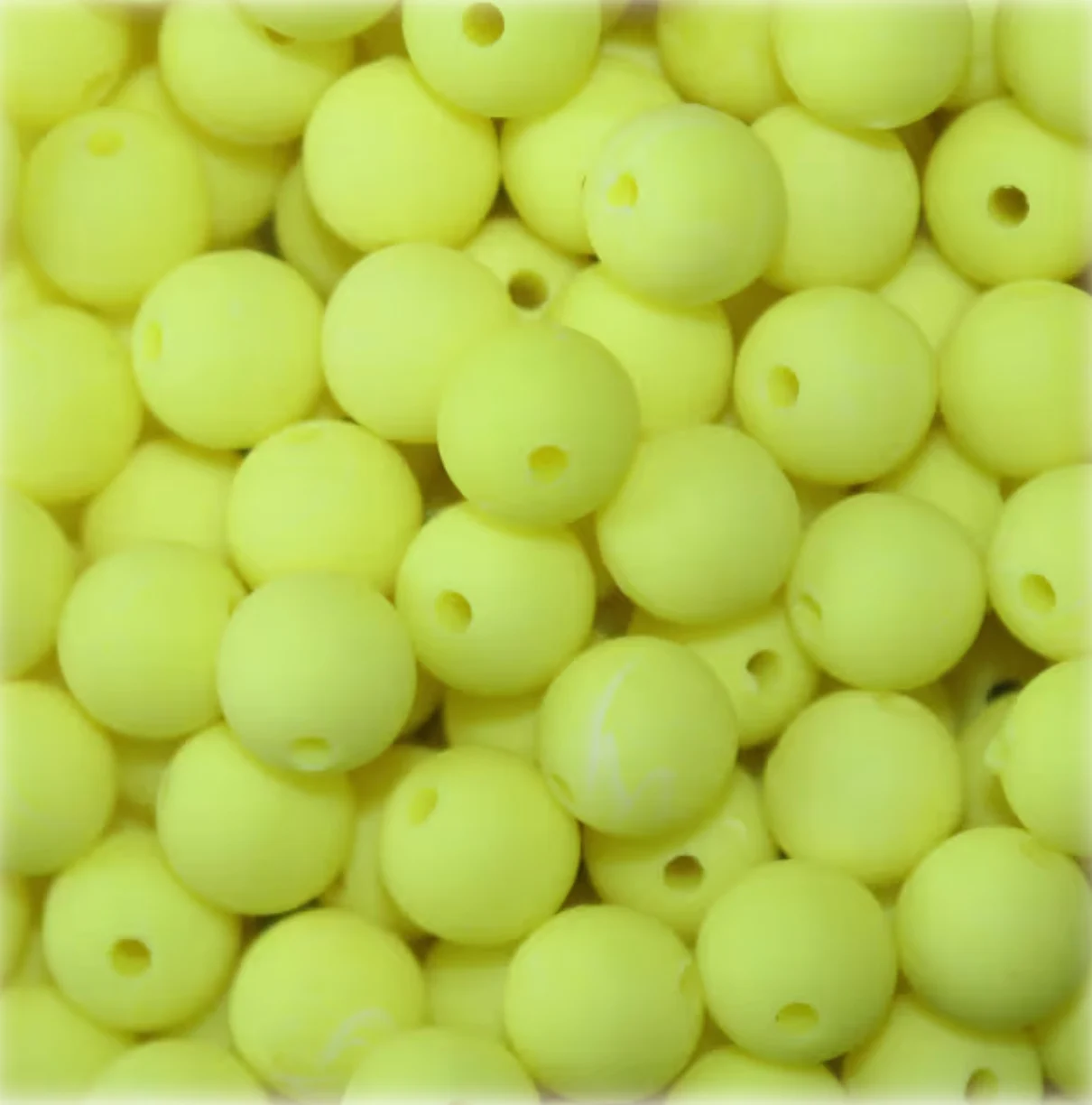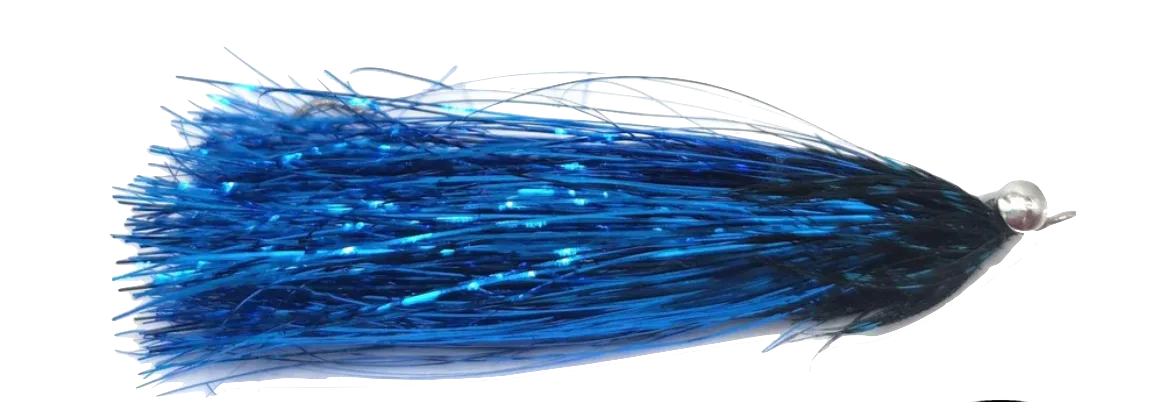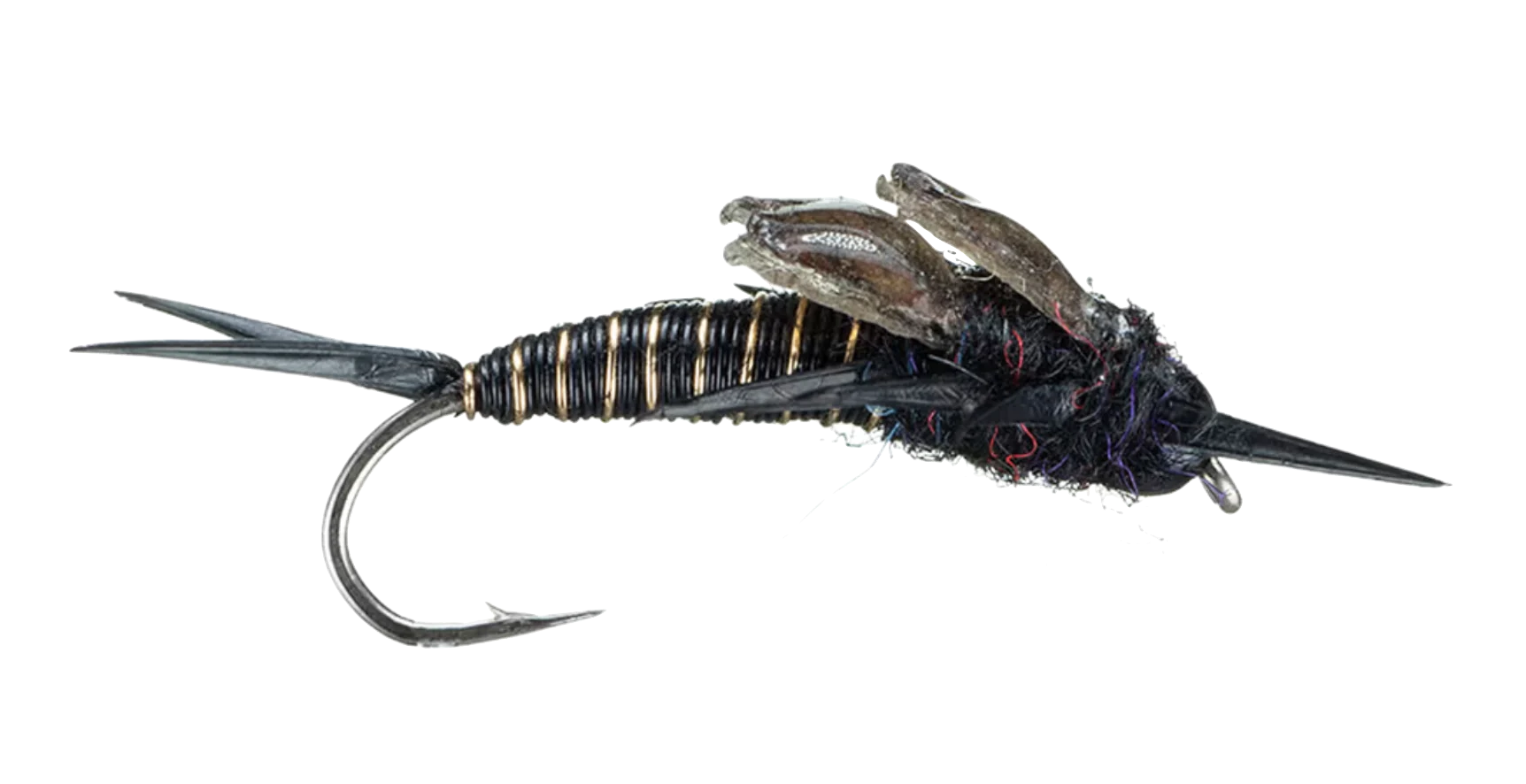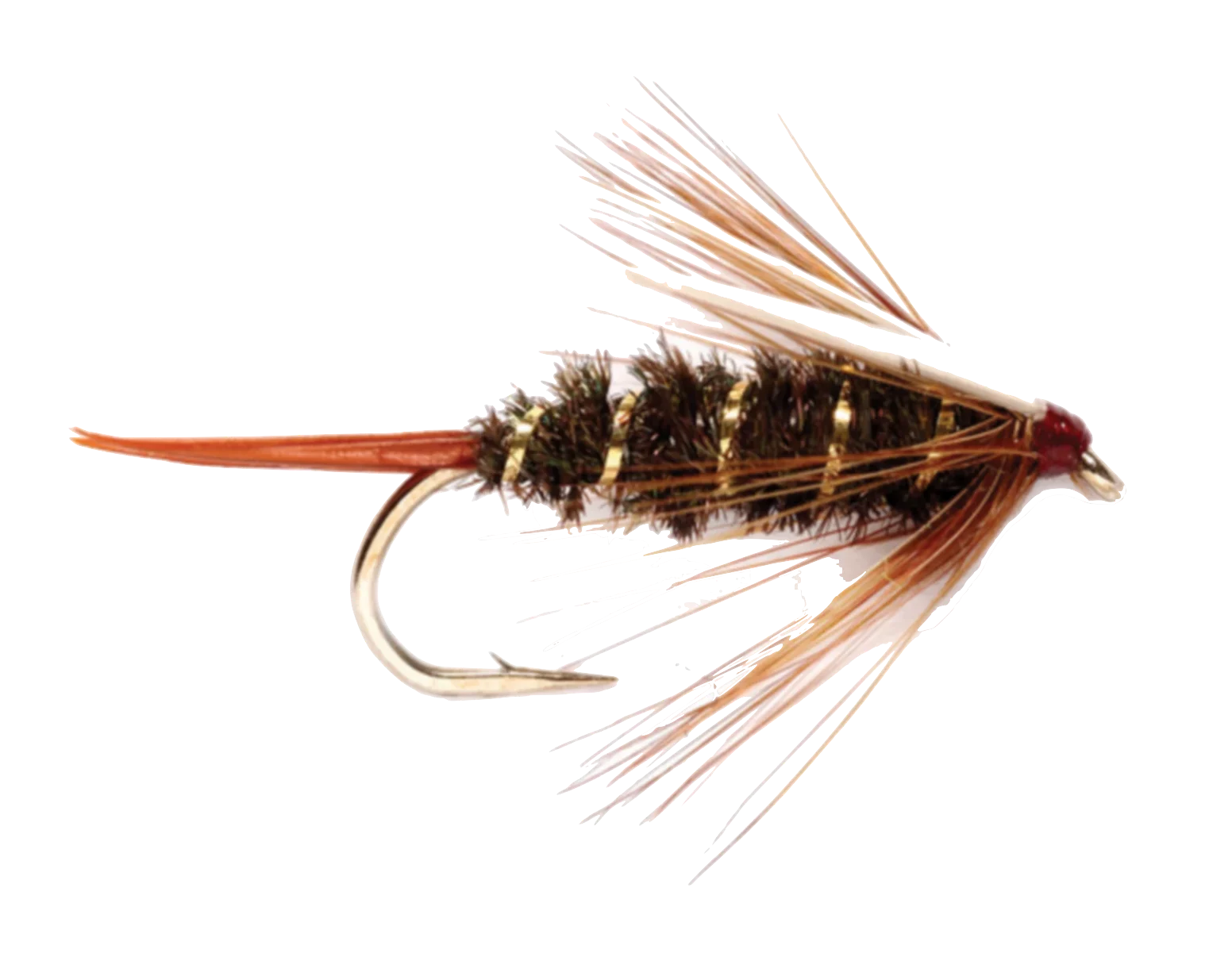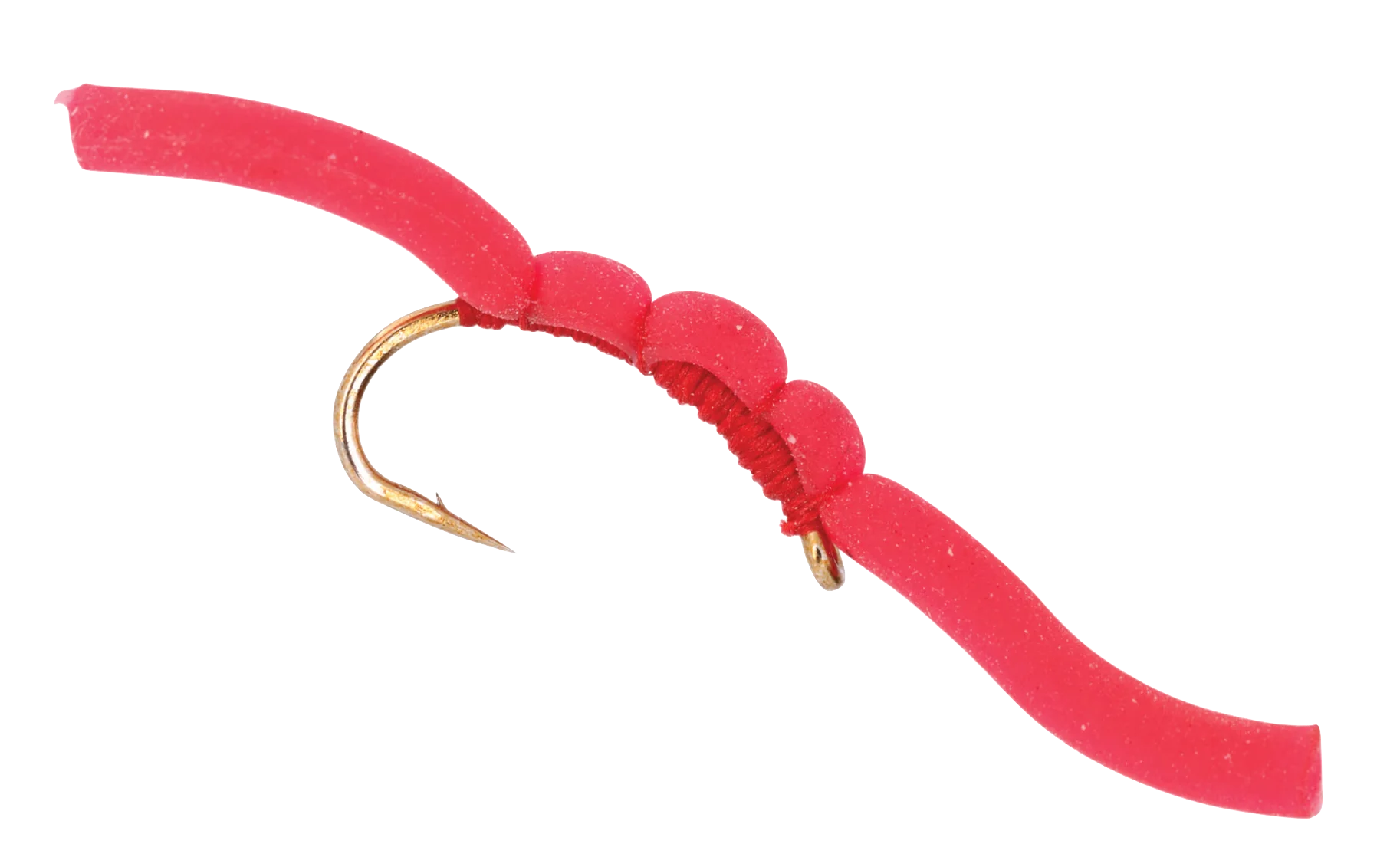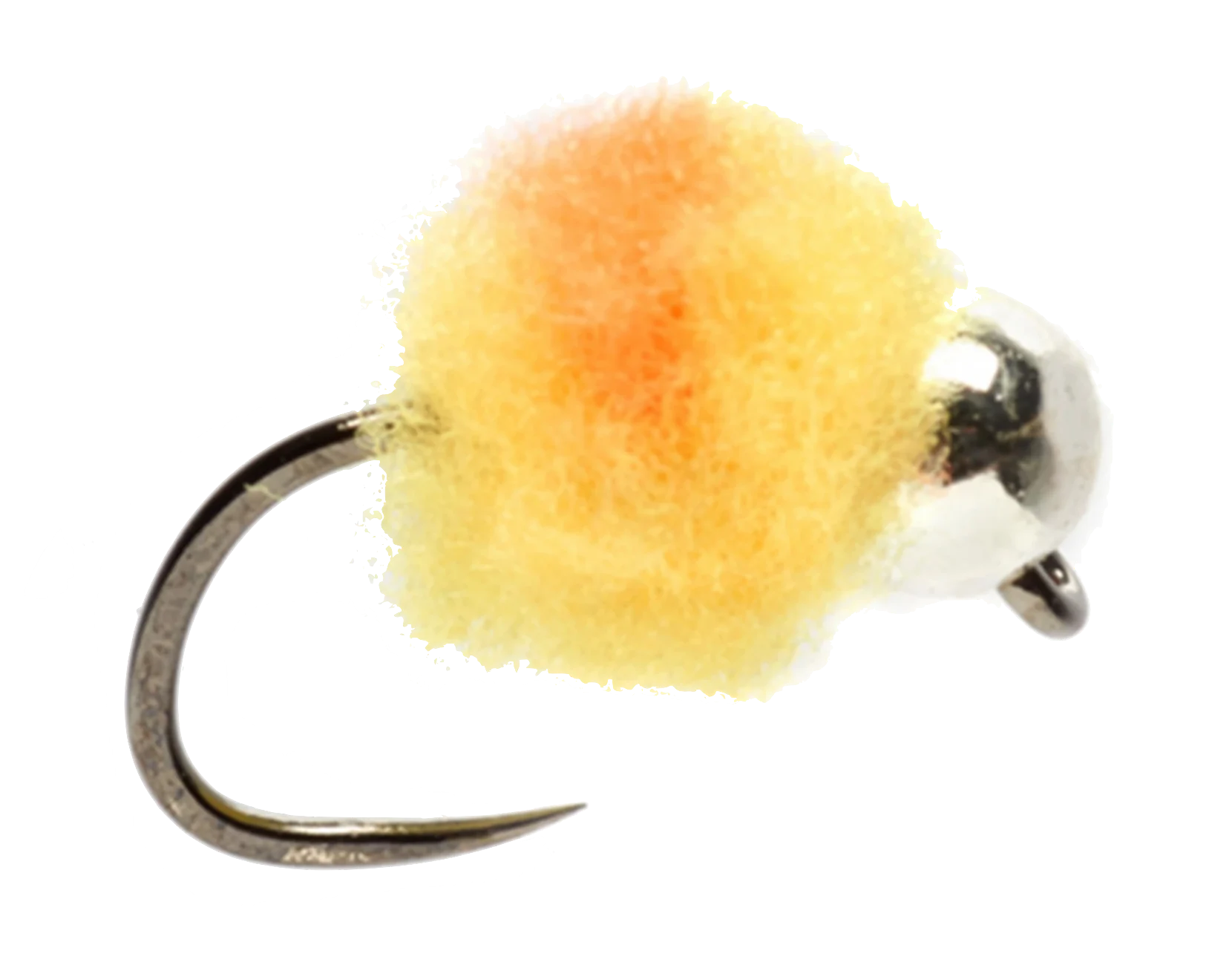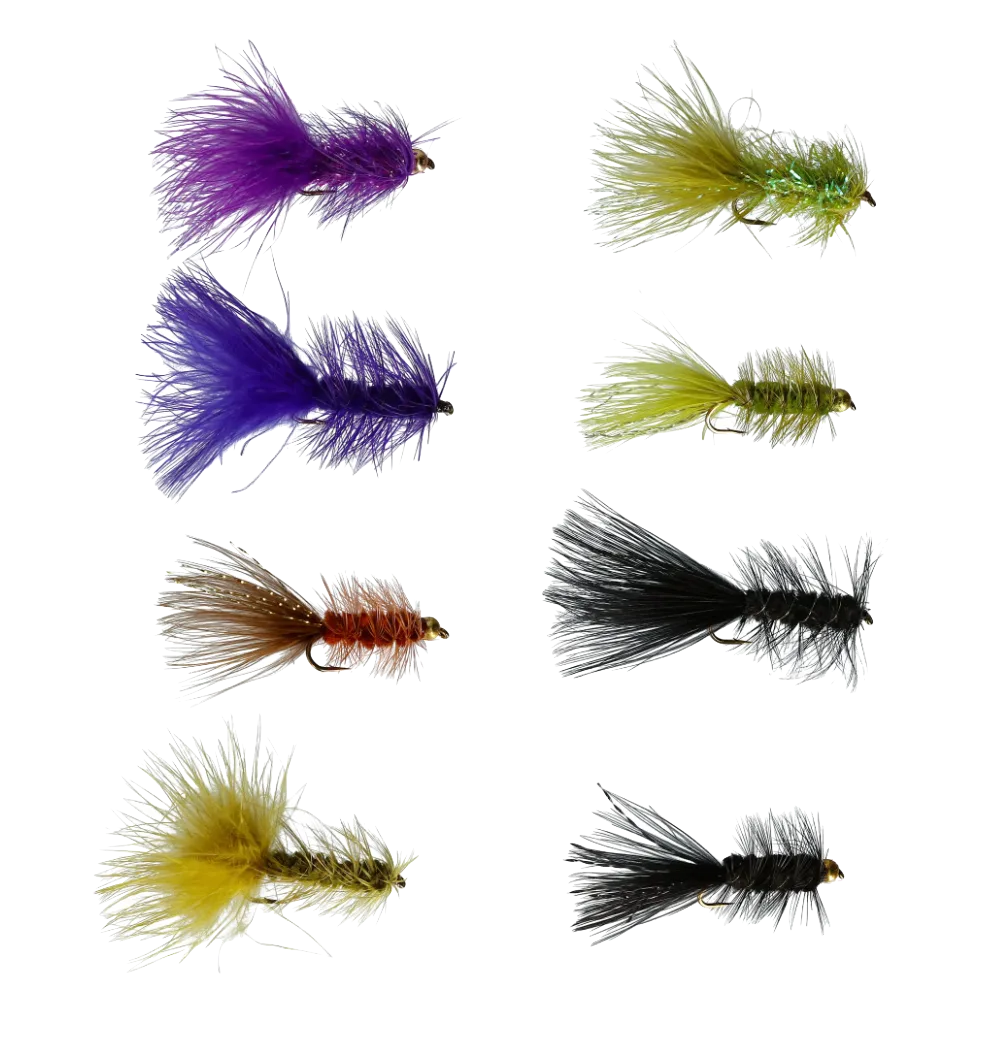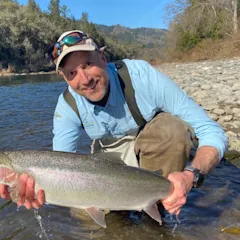For many anglers, the arrival of winter ushers in a season of rest and recovery. But for those of us who pursue steelhead, winter is not the time for taking a break. It’s a time to spend long days on the water chasing chrome. Winter steelheading, be it in tributaries to the Great Lakes or the rivers of the Pacific Northwest, can be challenging. Fishing for steelhead tests our gear, our physical mettle, and our patience. We do it because the payoff is worth the effort. Here are 10 great flies—five each for Pacific fish and for Great Lakes fish—that will cover most needs for winter steelheaders.
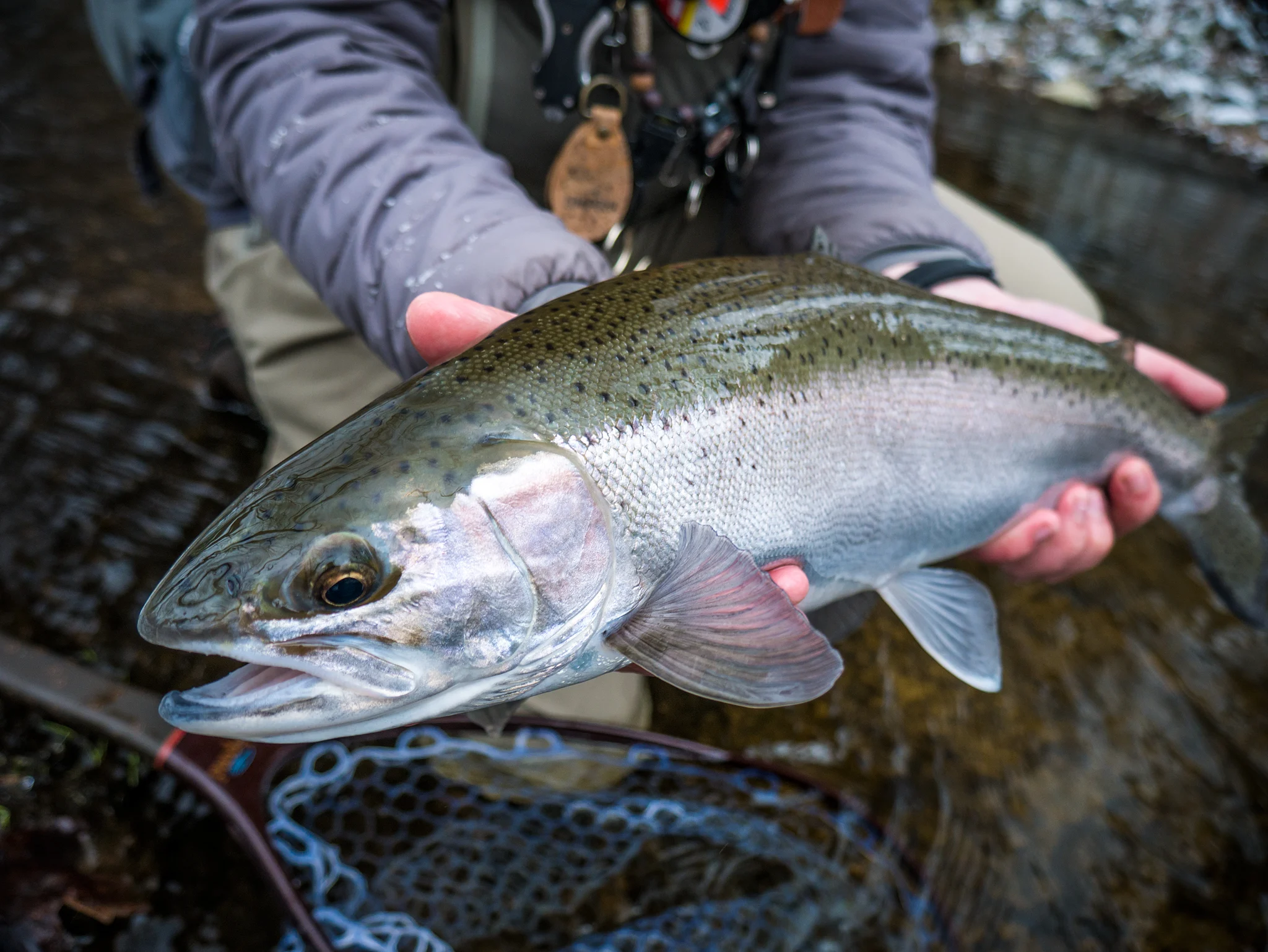
Pacific Run Steelhead Patterns
The Intruder
There are countless variations of the Intruder, but for our purposes we’ll focus on the style more than specific colors or designs. Intruder-style flies are purpose-designed for swinging, ideally on a Spey or switch rod. They feature a trailing hook attached with a flexible wire or line to a shank. Intruders are tied sparsely, with materials such as marabou, saddle hackle and ostrich herl that provide a relatively large profile without much actual body.
Because Intruders don’t hold much water, they are easy to cast for their size—an important feature because casting a weighty sinking fly line on a long Spey or switch rod is already plenty of work. Pink Intruders are popular in the Northwest, but dark colors such as black and purple are also effective.
Marabou Tube
Tube flies are tied on a piece of plastic or metal tubing instead of on a hook’s shank. Advantages include lighter weight for easier casting and being able to use a shorter shanked hook that’s toward the back of the fly, increasing hookups on short-striking fish. Short-shanked hooks also tend to stick better than long-shanked hooks because it’s harder for a fish to get leverage on the hook.
Tube flies are not new, but have been increasing in popularity among Pacific Northwest anglers. Greg Fitz, a fanatic Spey fisherman from Washington who works with me at Trout Unlimited, tells me that he fishes marabou tubes exclusively in the winter these days.
You can dead drift a tube fly or strip it like a conventional streamer, but the best presentation is swinging. The marabou really gives the fly an awesome, pulsating action. Carry a variety of colors from hot pink and red to black and purple.
Egg Sucking Leech
Although there are a couple variations to the Egg Sucking Leech pattern, it’s basically a simple Woolly Bugger or leech with a hot spot behind the hook eye. The classic is a black leech with an orange or pink head, but chartreuse heads are also popular. Versatility is this pattern’s calling card. Strip it. Swing it. Dead drift it. No matter the presentation, it works.
Beads
Dead drifting beads is probably the most used technique among steelhead anglers in the Pacific Northwest. Many fish beads under bobbers with spinning gear, but fishing a bead or two under an indicator is also popular among those who prefer to fish with fly rods. A rule of thumb is to fish larger beads in heavier flows while downsizing in lower, clearer water. Peg beads about two inches above a size 2-6 wide-gapped, short-shanked hook, like an Owner SSW.
A key is to use enough weight to get the bead as close to the bottom as possible. Mending to eliminate drag is critical. That said, letting a bead swing a bit at the end of the cast can produce a surprising number of strikes.
Prom Dress
Like an Intruder-style fly, the Prom Dress features a small trailing hook connected by braided line or light wire to a shank upon which the fly is tied. As you might suspect, based on the fly’s name, the Prom Dress is flashy. In fact, the primary material in the fly is Flashabou. The Prom Dress, a pure swinging fly, can be tied weightless or with an added bead chain or dumbbell eyes. It provides a big profile, but because the materials don’t soak up water, it’s light and a dream to cast. Most importantly, steelhead love it.
Great Lakes Steelhead Patterns
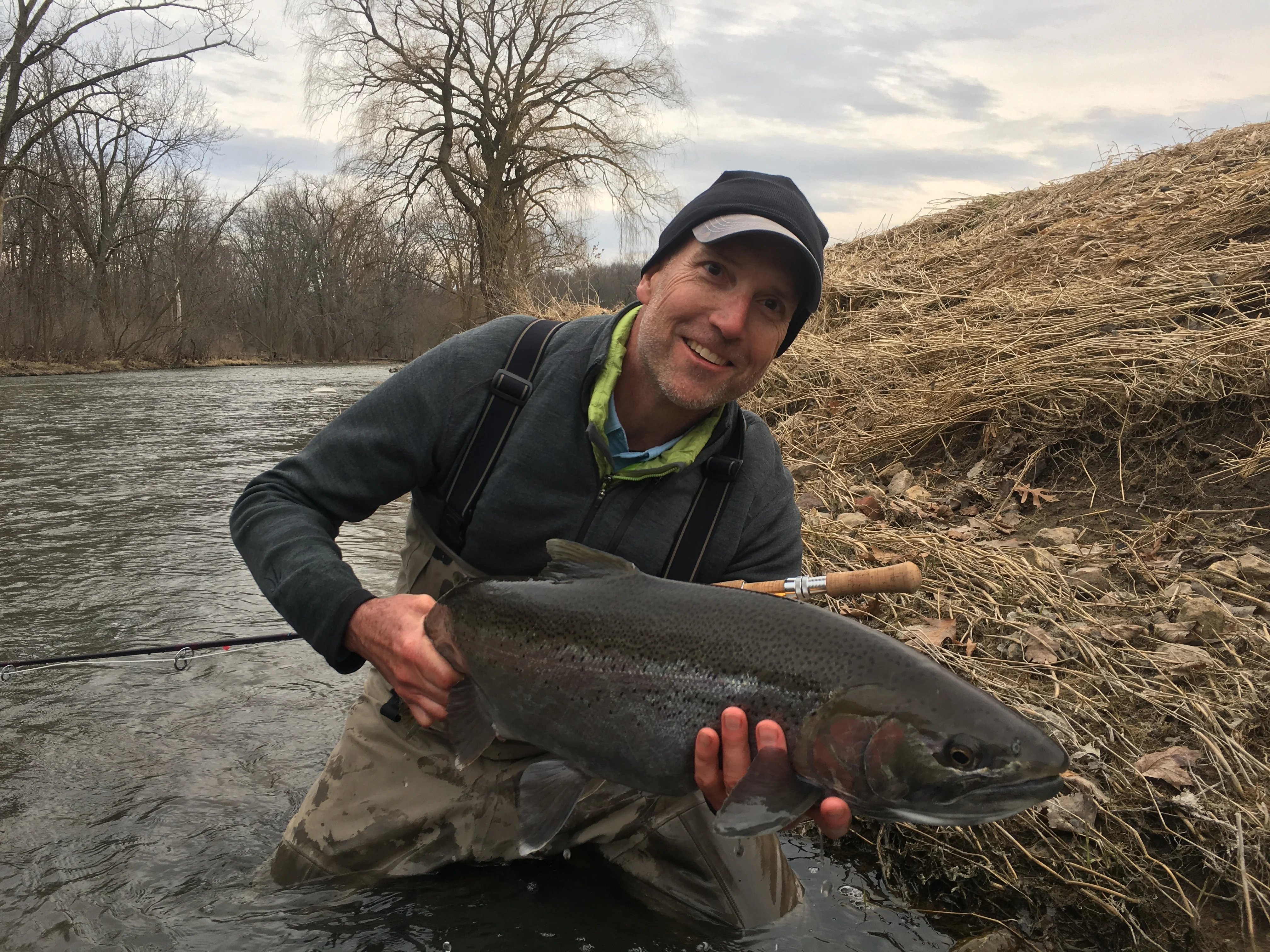
Stonefly Nymph
Great Lakes steelhead tend to be more active feeders than their West Coast relatives, so patterns that imitate food can work well. Stonefly patterns are great because they can represent a meal, but also can trigger reaction strikes. Is there a particular stonefly pattern that rises above the others? Yes! It’s the one you have the most confidence in. I’m partial to Kaufmann’s Stonefly with rubber legs, but any popular stonefly pattern will work. Stones are best fished on a dead drift. Double your chances by adding a dropper, such as a smaller stone or an egg pattern.
Steelhead Prince Nymph
Larger sizes of this classic trout pattern can be dynamite for steelhead in Great Lakes tributaries. (It’s also a killer summer steelhead pattern out West.) In bigger water, fish patterns with a bead head, lead wire wraps, or a combination to get deep fast. Fish under an indicator or use a tightline presentation when fishing pockets in smaller creeks. And, again, it usually pays to add a dropper fly where regulations allow.
Squirmy Wormy
No, the Squirmy Wormy is not a traditional “fly,” but we fish it on a fly rod, so here it is. Steelhead-sized worms are typically significantly larger than the ones we use for trout. A 2- to 3-inch long worm is the norm. Patterns can include added flash, weight from a bead, or a few wraps of lead or non-lead wire. You can even fish it on a jighead like spin fishermen do.
Worms are best presented on a dead drift, usually under an indicator. Tight lining can work well in smaller pocket water. Let the worm dangle at the end of the drift when you can. It may surprise you how many jolting strikes that dangle produces.
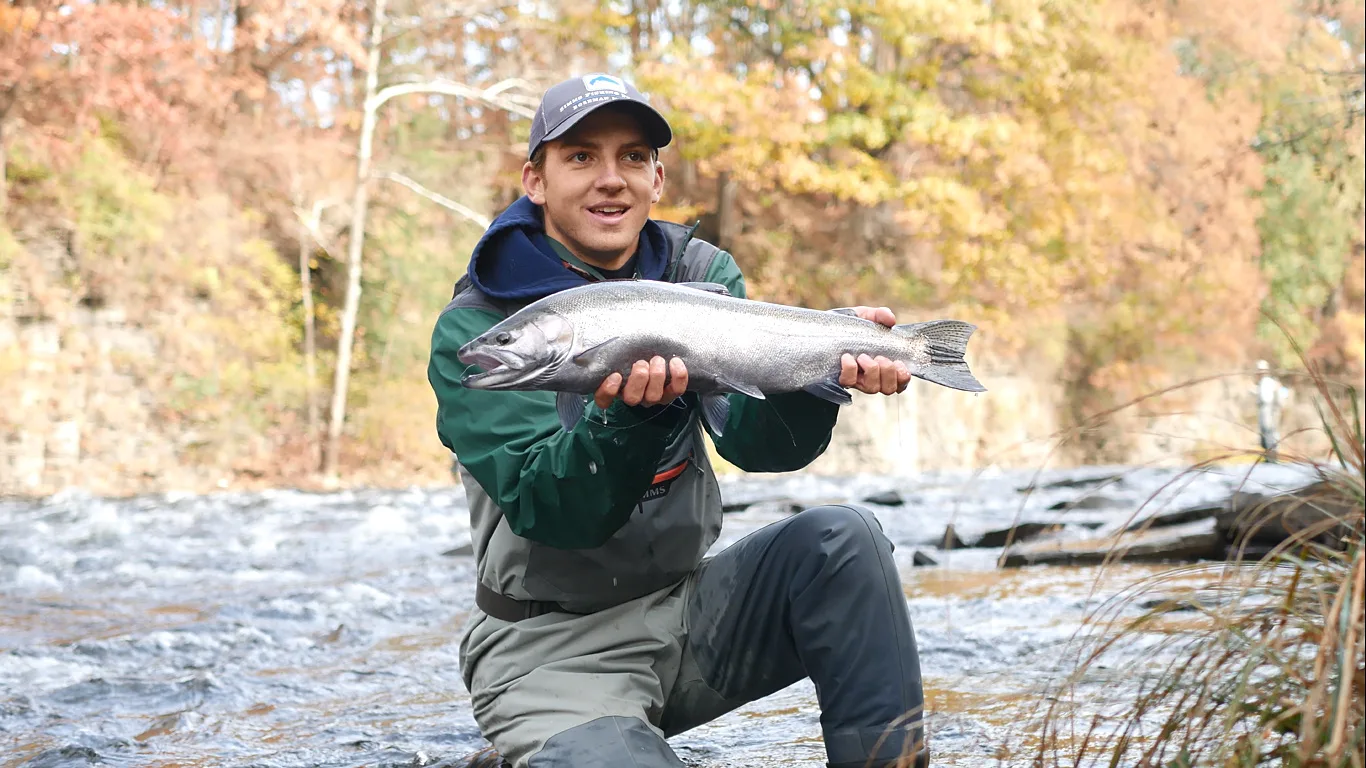
Eggs
It’s probably not an exaggeration to say that egg patterns are the most important flies for Great Lakes steelhead. Eggs can work especially well on fish that have just entered tributaries, but they produce all winter. And they don’t just catch steelhead; big browns and even salmon will crush egg flies.
Eggs can be tied with yarn, sparkly Estaz, or a combination. And, if you prefer beads, those count as eggs, too. Pink and orange are the most common colors, but make sure to have some pale yellow and chartreuse egg patterns on hand, too. Dead drifting is the presentation, but like with worms, let the egg swing and dangle for a few seconds at the end of every drift.
Woolly Bugger
Woolly Buggers are simple to tie and simple to fish with a variety of presentations. In drab colors they can be dead drifted under an indicator like a nymph. When dead drifting, always add a dropper fly like a smaller nymph or an egg pattern when regulations allow it. Woolly buggers are also effective streamers. They can work great on the swing or even vigorously stripped when steelhead are extra aggressive. A pink or peach-colored Bugger is a good starting point, but don’t be afraid to fish lighter colors like silver or white, especially if it’s early in the run or when there are lots of baitfish around.


